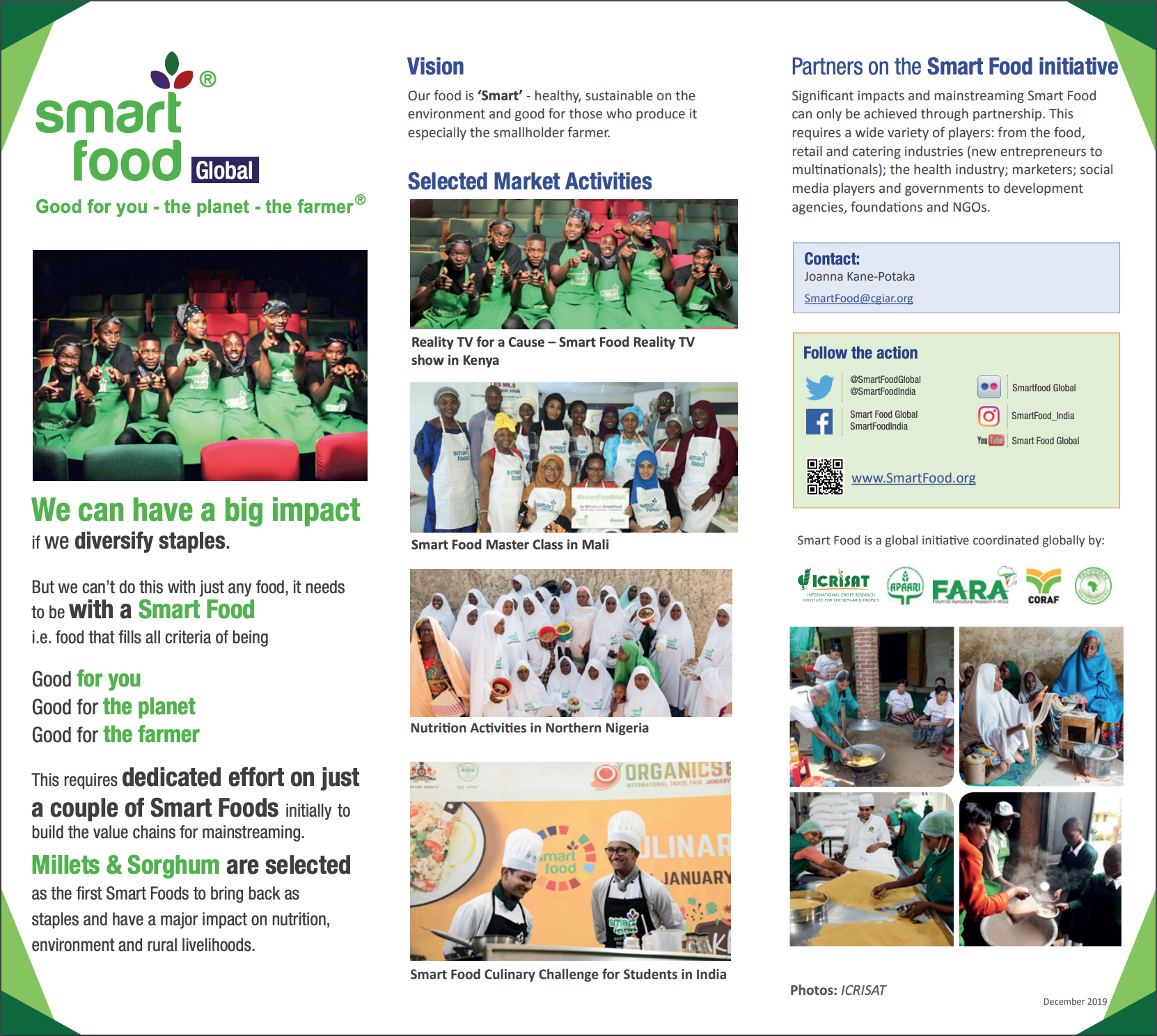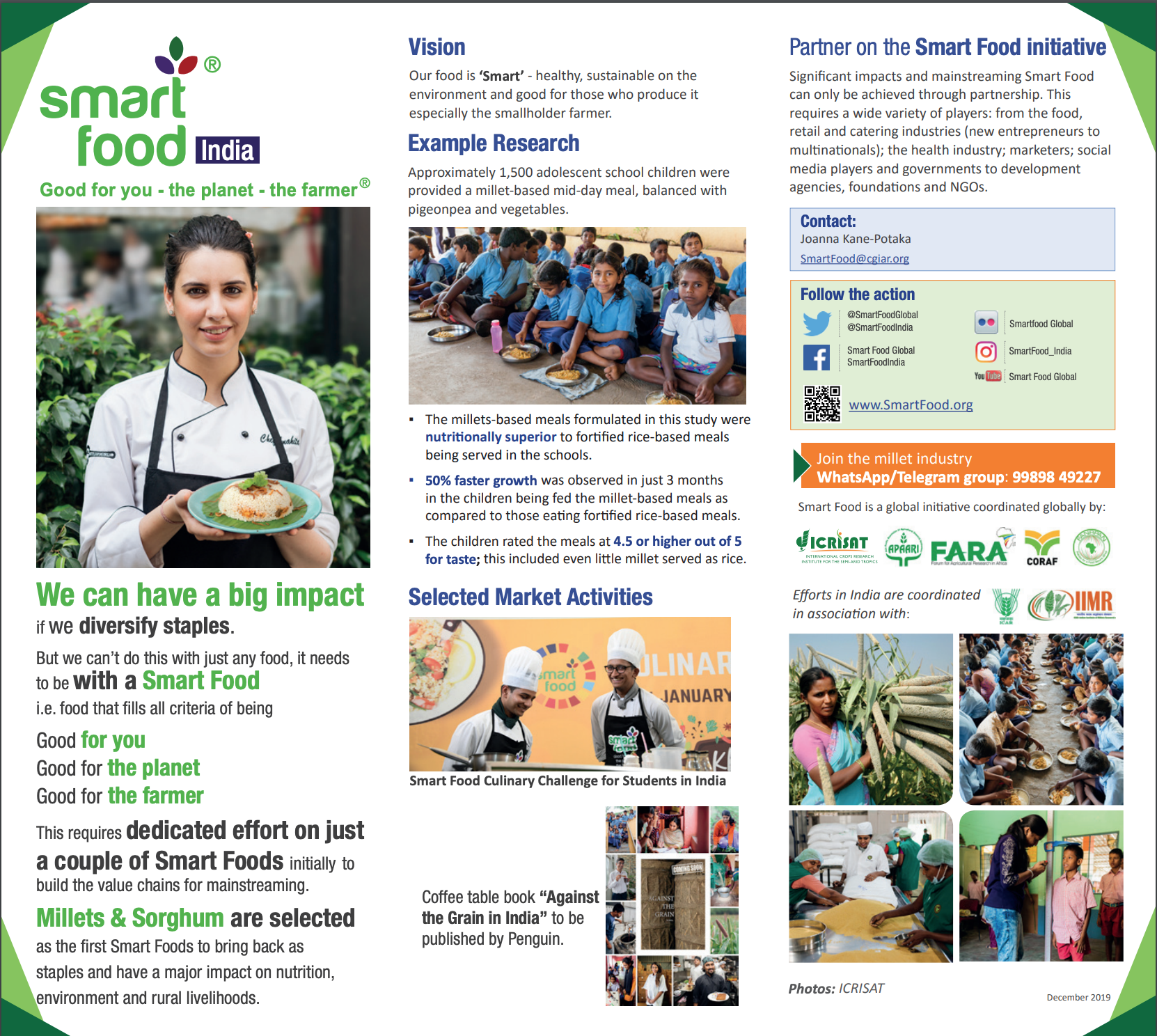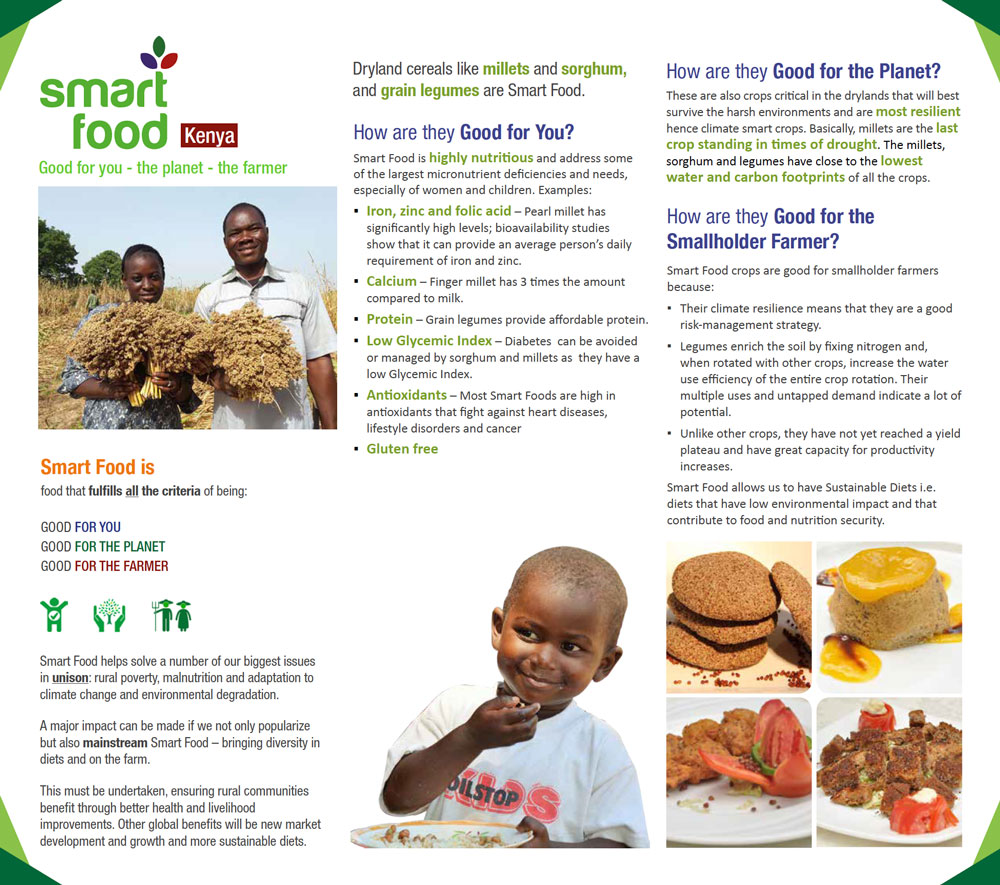The Initiative
Smart Food is food that fulfil all criteria of being good for you (nutritious and healthy); good for the planet (environmentally sustainable); and good for the farmer (climate smart, potential to increase yields, multiple uses).
The key objective of the Smart Food initiative is to diversify staples across Africa and Asia. By focusing on staples, often 70% of the plate and eaten 3 times a day, Smart Food Initiative plans to have the biggest impact. To achieve this, the initiative focuses on a couple of Smart Foods to not just popularize but bring into mainstream.
Smart Food is one of the solutions that contributes to addressing some of the largest global issues in unison: poor diets (malnutrition to obesity); environmental issues (climate change, water scarcity and environmental degradation); and rural poverty.
Smart foods are good for you, good for the planet and good for the farmer.
Given that staples may typically constitute 70 per cent of a meal and are often eaten three times a day, diversifying them can have a pronounced impact on overcoming malnutrition and poverty and coping with climate change and environmental degradation.
This would contribute to the Sustainable Development Goals (SDGs) for overcoming poverty and hunger (SDG 1 and 2), responsible consumption and production (SDG 12), along with adaptation to climate change (Goal 13). The approach taken includes gender equality (SDG 5) and action through partnerships (SDG 17).
Our work focuses on small holder farmers across Africa and Asia, to ensure that rural communities benefit from the increased demand, and from the health and nutritional benefits of Smart Foods.
We work globally to open markets for smart food and promote healthier and sustainable diets.
Vision
We envision a world where food is ‘Smart’ – healthy, sustainable on the environment and good for those who produce it.
Mission
To be a catalyst in breaking the food system divide so that Smart Food is a normal and major part of our diets.
Objectives
The key objective of the Smart Food initiative is to diversify staples across Africa and Asia. By focusing on staples, which often constitute 70% of the plate and are eaten three times a day, we can have a resounding impact.
We need a dedicated focused effort initially on a couple of Smart Foods to not just popularize but bring into mainstream. The strategy adopted to achieve this involves:
1. Developing the Smart Food concept and messaging through scientifically backed information, marketing strategies and materials, and classification and accreditation of Smart Food.
2. Creating a demand pull with consumers for smart food by undertaking a viral campaign, facilitating processing of modern convenience products with smart foods, and facilitating engagement with the health, food service and media industries.
3. Ensuring that smallholder farmers and rural communities in Asia and Africa benefit by providing on-farm support, connecting farmers to value chains, linking Smart Food with health activities on the ground, and advocacy for policy support, research and development.
4. Filling the Knowledge gaps: Identify and address the gaps and scientific research needs on how these food affect you (nutrition and health), the planet, the farmer and the whole value chain (cooking, processing, marketing).



